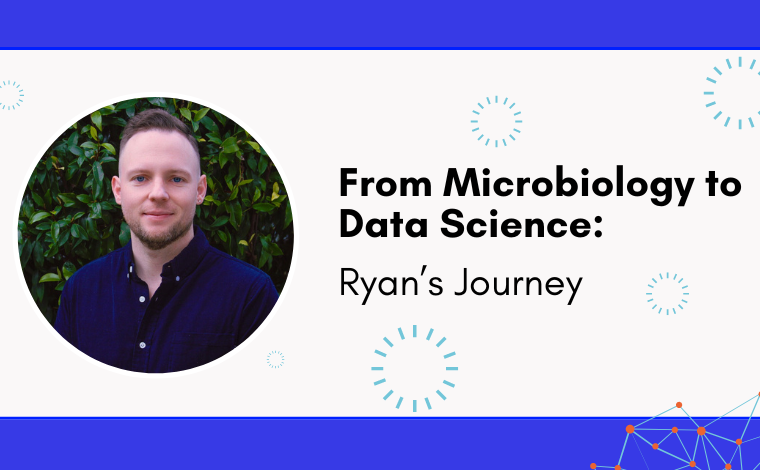Presentation Skills for Data Scientists

Stay Informed With Our Weekly Newsletter
Receive crucial updates on the ever-evolving landscape of technology and innovation.
Presentation skills for data scientists play a crucial role in extracting valuable insights from complex datasets.
However, a data scientist’s findings are only as impactful as their ability to communicate and present them effectively to decision-makers.
Understanding the importance of presentation skills for data scientists

Effective communication bridges the gap between data scientists and decision-makers.
While data holds immense potential, its true value lies in its interpretation and application.
The importance of presentation skills for data scientists cannot be overstated.
Data scientists must be able to translate their findings into meaningful insights that resonate with non-technical audiences.
By presenting their findings clearly, concisely, and compellingly, they can drive informed decision-making and influence organisational strategies.
Bridging the gap between data and decision-makers
Presenting complex data to decision-makers requires balancing technical depth and simplicity.
Data scientists must understand their audience’s needs and expectations to communicate their findings’ significance and implications effectively.
By bridging the gap between data and decision-makers, they can build trust and credibility, fostering a culture of data-driven decision-making within the organisation.
The role of effective communication in data interpretation
Data interpretation is about deciphering numbers and telling a compelling story.
Effective communication involves presenting data to connect with the audience’s emotions and values.
Data scientists can leverage visualisations, storytelling techniques, and narrative structures to engage their audience and bring their insights to life.
Presentation skills for data scientists enable professionals to convey the complexities of their work effectively.
When presenting their findings, data scientists must consider the level of technical expertise of their audience.
They need to strike a balance between providing sufficient technical details to demonstrate the rigour of their analysis and simplifying the information to make it accessible to non-technical stakeholders.
Furthermore, presentation skills for data scientists allow professionals to highlight their findings’ practical applications and real-world implications.
They can demonstrate how their insights can drive tangible outcomes and inform strategic decision-making by contextualising their analysis within the broader business context.
This enhances the value of their work and helps decision-makers understand the potential impact of data-driven solutions on their organisations.
Critical elements of a compelling data science presentation
A compelling data science presentation requires careful planning and attention to detail.
Structuring your presentation for maximum impact
The structure of a presentation can significantly influence its effectiveness.
Data scientists should develop a clear and logical flow, guiding the audience through their findings.
Presentation skills for data scientists involve using frameworks such as the problem-solution-impact model or the storytelling arc, they can create a compelling narrative that captures attention and drives action.
It is crucial to remember that the opening of a presentation sets the tone for the entire talk.
Data scientists should start with a strong hook to grab the audience’s attention and establish the topic’s relevance.
Additionally, a well-crafted conclusion summarising key points and providing clear takeaways can leave a lasting impression on the audience.
The art of visualising data effectively
Data visualisation is a powerful tool for conveying complex information in a digestible format.
Data scientists should leverage appropriate visualisations like charts, graphs, and infographics to enhance understanding and engagement.
By applying design and aesthetics principles, they can create visually appealing and informative presentations that resonate with their audience.
Moreover, incorporating interactive elements into data visualisations can further engage the audience and allow a deeper exploration of the insights presented.
Techniques like interactive dashboards or clickable charts can provide viewers with a hands-on experience, increasing their involvement and understanding of the data.
Enhancing your presentation skills: practical tips for data scientists

Mastering the language of non-data scientists is essential for effective communication.
Data scientists should avoid jargon and technical terms that may confuse or alienate their audience.
Instead, they should use clear and concise language to convey key messages and insights. Additionally, data scientists can enhance their presentation skills by incorporating storytelling techniques.
By crafting relatable and engaging narratives, they can capture the attention and interest of their audience.
Mastery of the language of non-data scientists
Presentation skills for data scientists means communicating with stakeholders, who can come from various backgrounds and have various levels of technical expertise.
Adapting language and explanations to suit different audiences is crucial.
By avoiding jargon and using everyday language, data scientists can ensure that their findings are accessible and understandable to all, regardless of their technical knowledge.
Furthermore, data scientists must actively listen to their audience’s feedback and adjust their communication style accordingly.
This two-way interaction can help in building rapport and ensuring that the message is effectively conveyed and understood by all parties involved.
Engaging your audience: the power of storytelling in data science
Presentation skills for data scientists rely on the art of storytelling.
Storytelling is a powerful tool that data scientists can leverage to captivate their audience.
They can make their insights more relatable and memorable by framing their findings within a compelling narrative.
A well-crafted story can help with information retention, evoke emotions, and influence decision-making.
Moreover, incorporating visual elements such as graphs, charts, and infographics can further enhance the storytelling experience for the audience.
These visual aids can simplify complex data sets and trends, making it easier for the audience to grasp the key points being presented.
Overcoming common challenges in data science presentations
Data science presentations come with their fair share of challenges.
Overcoming these obstacles is key to delivering impactful presentations.
Simplifying complex data for your audience
Presentation skills for data scientists often involve communicating intricate datasets that may overwhelm non-technical audiences.
It is crucial to distil complex information into clear and concise messages.
Data scientists can make their presentations more accessible and engaging by breaking down data into digestible chunks and using visual aids.
Handling questions and feedback effectively
Data science presentations often invite questions and feedback from the audience.
Data scientists should be prepared to address queries and respond to feedback confidently and professionally.
By actively listening and providing clear and concise responses, they can foster a constructive dialogue and enhance the impact of their presentations.
The future of presentations in data science

The world of data science is constantly evolving, and so are the presentations associated with it.
As the field embraces technological advancements, the future of presentations in data science holds exciting possibilities.
The role of AI and machine learning in data presentations
Artificial intelligence (AI) and machine learning (ML) are revolutionising data analysis and interpretation.
In the future, these technologies may also influence how data science presentations are crafted and delivered.
AI and ML algorithms can help automate data visualisation, generate insights, and optimise presentation delivery.
Staying ahead: continuous improvement of presentation skills in data science
Data scientists must continually refine and improve their presentation skills as data science evolves.
This requires staying abreast of the latest trends, tools, and techniques in data visualisation and effective communication.
Additionally, seeking feedback and learning from experienced presenters can help data scientists elevate their skills and create compelling presentations.
Conclusion
Crafting compelling presentations is an essential skill for data scientists.
Data scientists can effectively communicate their findings and drive impactful decision-making by understanding the importance of presentation skills, mastering the key elements of a compelling presentation, enhancing their communication abilities, and overcoming common challenges.
As the future of data science presentations evolves, data scientists must stay ahead, adapting to technological advancements and continuously improving their presentation skills to remain relevant in this fast-paced field.
Are you ready for a career in data science?
Whether you are new to tech or a seasoned professional looking for a change, the Institute of Data’s Data Science & AI Program equips you with the skills you’ll need to thrive in this ever-evolving field of tech. Download a Data Science Course Outline here.
Ready to learn more about our programs?
Contact our local team for a free career consultation about the programs.




